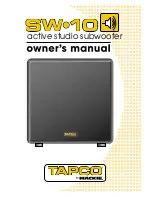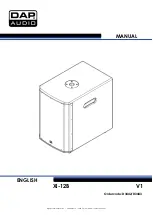
2. Connect a 1.5k , 10 watts resistor, in parallel with a 0.15 F
capacitors, between each exposed metallic part on the set and a
good earth ground such as a water pipe, as shown in Figure 1.
3. Use an AC voltmeter, with 1000 ohms/volt or more sensitivity, to
measure the potential across the resistor.
4. Check each exposed metallic part, and measure the voltage at
each point.
5. Reverse the AC plug in the AC outlet and repeat each of the above
measurements.
6. The potential at any point should not exceed 0.75 volts RMS. A
leakage current tester (Simpson Model 229 or equivalent) may be
used to make the hot checks, leakage current must not exceed 1/2
milliamp. Should the measurement is outside of the limits
specified, there is a possibility of a shock hazard, and the
equipment should be examine and rechecked before it is returned
to the customer.
1.1.3. Caution for fuse replacement
2. Handling the Lead-free Solder
2.1. About lead free solder (PbF)
Distinction of PbF P.C.B. :
P.C.B.s (manufactured) using lead free solder will have a PbF stamp on the P.C.B.
Caution:
- Pb free solder has a higher melting point than standard solder:
Typically the melting point is 50 - 70°F (30 - 40°C) higher. / Please
use a high temperature soldering iron. In case of the soldering
iron with temperature control, please set it to 700 ± 20°F (370 ±
5
PDF created with pdfFactory Pro trial version
Summary of Contents for SB-WA933
Page 21: ...21 PDF created with pdfFactory Pro trial version www pdffactory com ...
Page 22: ...14 1 2 Cabinet Parts List 22 PDF created with pdfFactory Pro trial version www pdffactory com ...
Page 31: ...FLE0508 P A S E N 31 PDF created with pdfFactory Pro trial version www pdffactory com ...
Page 37: ......
Page 38: ......
Page 39: ......






































